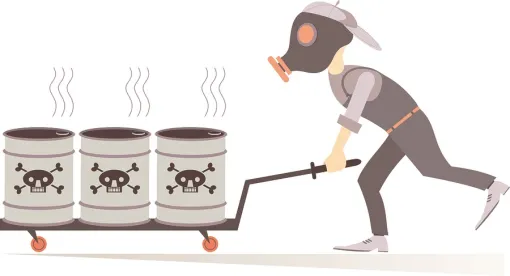On January 4, 2017, the U.S. Environmental Protection Agency (EPA or Agency) issued a final memorandum entitled "Guidelines for Evaluating the Post-Closure Care Period for Hazardous Waste Disposal Facilities Under Subtitle C of RCRA" (Final Guidance). The purpose of the memorandum is to provide guidance to regulators in evaluating the length of the post-closure care period for hazardous waste disposal facilities subject to Subtitle C of the Resource Conservation and Recovery Act (RCRA), and in determining whether it should be adjusted. KEAG Bulletin No. 2015-34, dated May 12, 2015, summarized EPA's draft guidance for post-closure care adjustments. In the Final Guidance, EPA enumerated ten criteria for regulators to consider in evaluating the post-closure care period. The criteria include: (1) waste treatment; (2) the nature of hazardous waste remaining in the unit; (3) unit type/design; (4) leachate; (5) groundwater; (6) siting and site geology/hydrogeology; (7) facility history; (8) gas collection system integrity; (9) integrity of cover system; and (10) long-term care. Final Guidance at 3-11. One change in the criteria from the draft guidance involves waste treatment. Instead of addressing waste treatment explicitly, the draft guidance simply provided for identification of the presence of hazardous waste in a unit that might have the potential for unacceptable impacts on human health and the environment. KEAG Bulletin No. 2015-34. In the Final Guidance, EPA describes this criteria as "waste treatment," where it is recommended that a regulator determine how the waste may have been treated prior to disposal and whether it was subject to the Land Disposal Restriction (LDR) program prior to disposal. Final Guidance at 4. EPA noted that hazardous waste treatment helps to destroy harmful contaminants or reduces toxicity of waste before disposal in a land disposal unit and provides a more lasting form of groundwater protection than does waste containment alone. Id. Similarly, the Agency noted that a process called stabilization or immobilization, especially for metal contaminants that cannot be effectively treated, also helps to reduce mobility and leachability of hazardous constituents. Id.
The Final Guidance provides additional recommendations to regulators for reviewing hazardous waste management units approaching the end of the post-closure care period. The Agency recommends starting the evaluation process at least 18 months before the expiration of the post-closure permit or post-closure care period, whichever comes first. The guidance also discusses approaches for post-closure care permits, enforceable documents such as orders in lieu of a post-closure permit, and interim status post-closure care.




 />i
/>i
